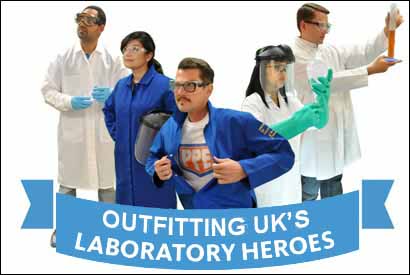
Laboratory safety is of the up-most importance when working in lab. There are many rules that need to be followed in the lab that are designed to keep you safe. This is because many governmental agencies set policies and have laws about what should be done and what the proper way is to do things.
This page briefly summarizes some of the most important aspects (or important as defined by a chemist who teaches lower level labs) and is designed to supplement what’s in the lab manual. Please read the lab manual prior to reviewing information on this page as some information is available in the lab manual that is not shown here.
Our professional society, the American Chemical Society, has produced a series of safety videos to provide you with information on how to work safely in the lab. You are expected to watch these videos and apply the knowledge you gain from viewing them when working in the lab.
[TS_Video_Gallery id=”8″]
The University of Kentucky’s Environmental Health and Safety (EHS) has specific training in which this is intended to supplement and not replace. Of their available online training, those of particular interest for chemistry students include:
- Chemical Hygiene Plan/Lab Safety
- Hazardous Waste, Specific (for people in Chem/Phys and JSB)
- Fire extinguisher
- Fume Hood
- Eye wash/Safety Shower
To take the EHS training, you must log in using your LinkBlue credentials.
Your TA will go over all of the safety policies in the lab during the first lab meeting, prior to you completing any experiment. You are then required to complete an online safety quiz to demonstrate and document your understanding of lab safety and show that we trained you for lab safety (oh, those lawyers and governmental agencies!). Your TA will also ask you to sign the Lab Safety Release form and your TA will then submit it to the lab supervisor for record keeping.
and your TA will then submit it to the lab supervisor for record keeping.
Lab Safety Policies
Required Personal Protective Equipment or Lab Attire
- Everyone participating in the lab must follow all safety rules to ensure the safety of themselves, their instructors and others working in the building.
- Students who do not follow the safety rules will not be permitted to work in the lab. Violations which result in students being asked to leave the lab are unexcused absences and cannot be made up.
- Students who show blatant disregard for safety rules may be dismissed or expelled from the lab.
- Review the safety information provided both in the lab manual and on the Canvas course website.
- The chemical laboratory is a dangerous place only if you
- are careless.
- do not know what you are doing.
- do not use proper equipment or proper technique.
- Students should use common sense and only do the authorized experiments and operations
- Follow the directions in the manual, textbook, and/or handouts.
- Do only the assigned experiments at the assigned time.
- Follow the directions and warnings of the instructor.
- Respect the safety of others in every laboratory operation you perform.
- Study and plan your work before you come to the laboratory. Ignorance and carelessness are the causes of most accidents.
- The Department of Chemistry prohibits the use of personal electronic equipment (cell phones, iPads, etc) while students are in the lab. Any accidental damage or contamination of this equipment is not the responsibility of the Department.
[TS_Video_Gallery id=”7″]
Food and drink in the lab
- Do no leave any food or drink in the hallway outside of the labs. Any food or drink left in the hallway outside of the labs may be thrown away.
- Water bottles with a tight fitting lid that seals completely may be put in your lab cubby. No open containers will be allowed in the lab.
- Bottles (or other items of food or drink) must not be removed from the cubby while the lab is in progress.
- Students cannot eat or drink in the lab.
- As a reminder, students must wash their hands before leaving the lab.